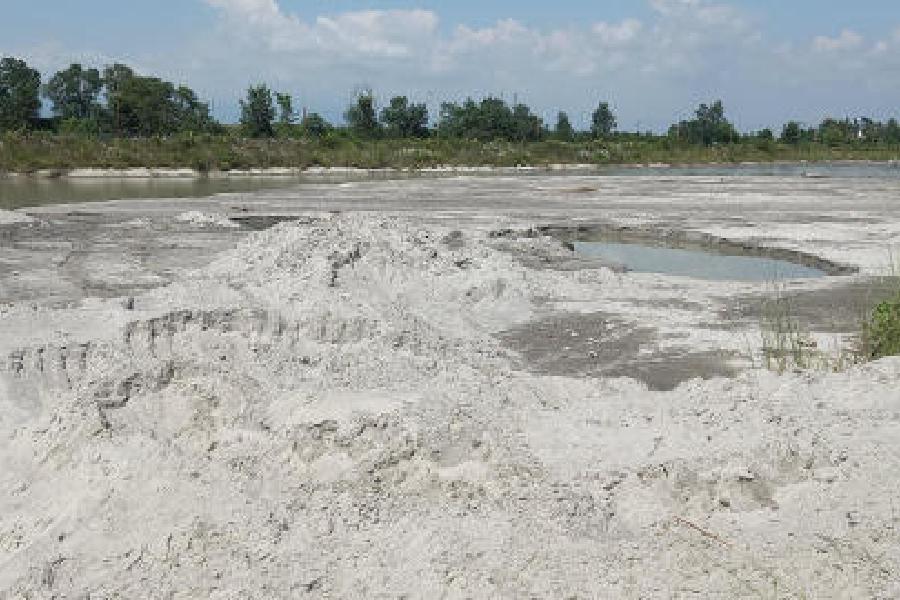Experts of the River Research Institute (RRI), under the state irrigation and waterways department, have come up with a comprehensive report on the Teesta in which tonnes of debris — sand, stones and boulders — have settled in the wake of last October's flash flood, increasing the riverbed level and making it more prone to floods.
As monsoon has set in, the mighty river, with its heightened riverbed, is spilling over its banks and flooding a number of locations along its course. In the report, the experts have said that the debris has to be extracted to lower the bed and thus increase the water-retaining capacity of the Teesta.
“We have received the report from the RRI. We don’t think the Centre will grant funds for the work. The state government has to carry out the work on its own. Soon, we will hold talks with engineers and river experts as to how the work can be carried out,” said state irrigation minister Partha Bhowmik.
In the report, the experts of the RRI have mentioned that the flash flood that occurred due to the outburst of South Lhonak Lake — a glacial lake in the northern parts of Sikkim — led to extensive deposits of sand and stones of various sizes on the river bed.
“From Sevoke to Mekhliganj, where the Teesta enters Bangladesh via Jalpaiguri, 18 spots have been identified from where these minor minerals (sand, stones and pebbles) have to be extracted to lower the river bed. These spots are located along a stretch of 33km,” said a source.
In some locations, digging has to be carried out till 2.5 feet inside the riverbed over a stretch that is around 400 metres wide.
“For this work, around ₹565 crore is required. The ideal time for such extraction is post-monsoon or winter, when water levels receded in the Teesta,” the source added.
Krishnendu Bhowmik, the chief engineer (northeast) of the state irrigation department, said that the experts of the RRI have come up with a comprehensive report.
“However, a considerable amount of money is required for the work. The irrigation minister, the principal secretary and even Mamata Banerjee, the chief minister, are looking into the issue,” he said.
Sources in the state irrigation department said that as it was more or less evident that the state government would have to spend money for the work, they suggested an alternative option to the government.
“The RRI has earmarked the 18 spots where such extraction of debris is necessary. These spots can be leased out to private agencies which are into mining minor minerals from rivers, through the department concerned,” said an official.
“If it is adopted, the state government will not have to spend funds. Instead, the state government can earn revenue from those who will get the leases of these 18 sites,” he said.
He also pointed out that the extraction of debris has to be constantly monitored to ensure that the expert recommendations are followed and no unscientific or indiscriminate extraction takes place to change the river’s course.










